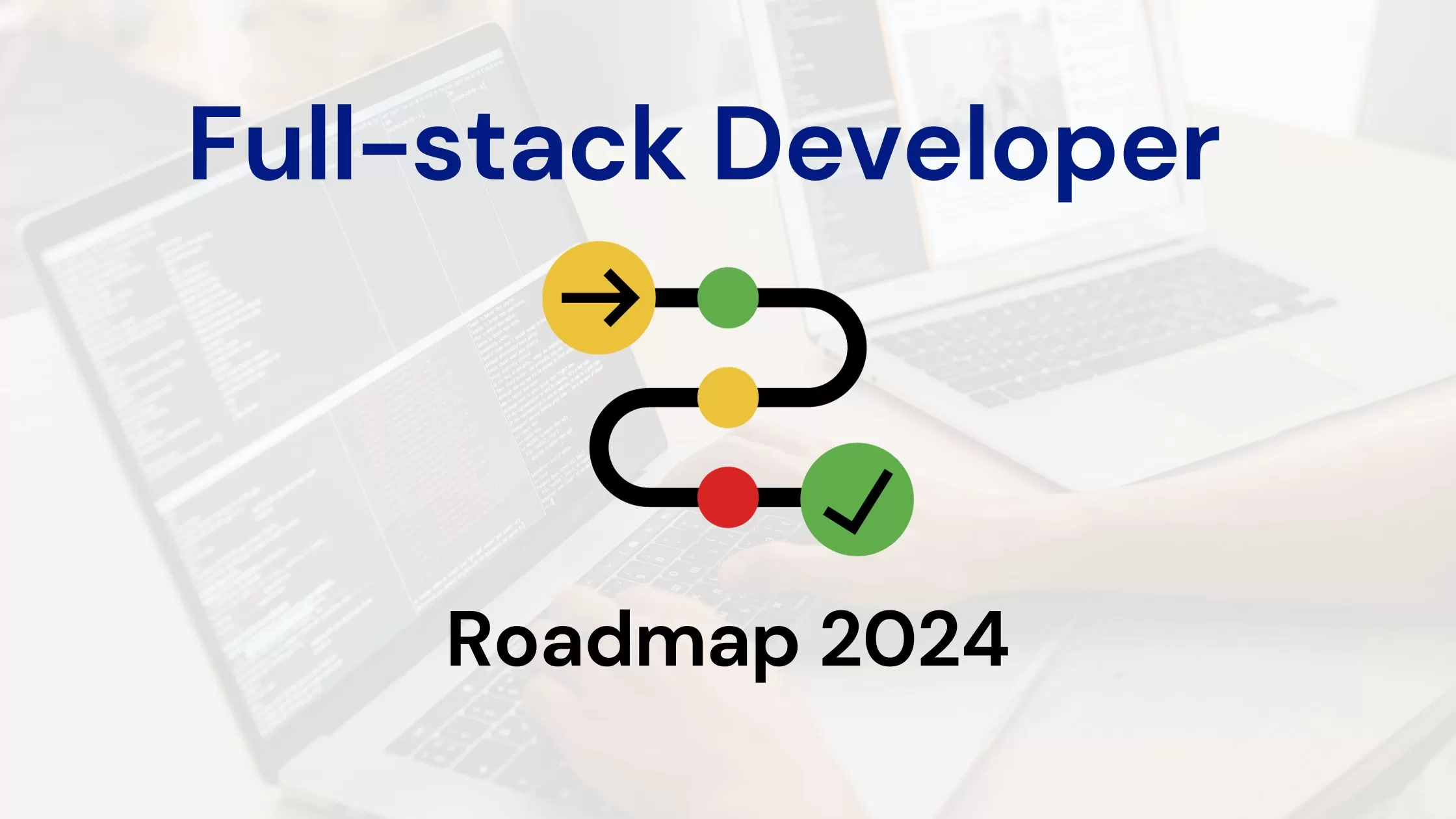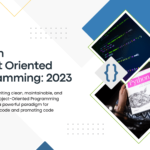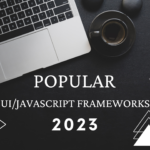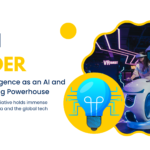Hey there! You already know how important it is to stay on top of the ever-changing world of web development. And guess what? The demand for skilled Fullstack Developers is expected to keep growing in 2024!
To make sure you’re ready to tackle any challenges and take advantage of opportunities, you need a clear roadmap for mastering all the necessary tech skills. In this post, we’ll cover what you should learn, where to find free and paid training tools, and even give you some sample code to show off your skills.
But just so we’re on the same page, let’s talk about what fullstack development is: It’s basically being a pro at both front-end and back-end web development.
A Fullstack Developer has all the skills needed to handle every aspect of a software application, from making it look good and user-friendly (front-end) to dealing with servers, databases, and behind-the-scenes stuff (back-end).
They’ve got the whole package to create awesome web apps on their own or as part of a team.
So let’s jump right into the Fullstack Developer Roadmap for 2024!
🏅 Front-end Development
1. HTML: The Building Blocks of the Web
HTML (Hypertext Markup Language) serves as the foundation for structuring web pages. It defines the structure and content of a web page using tags and elements.
As a Fullstack Developer, having a strong understanding of HTML is essential for creating well-structured and accessible web pages.
2. CSS: Styling and Designing Web Pages
CSS (Cascading Style Sheets) is instrumental in styling web pages, enhancing their visual appeal, and creating engaging user interfaces. With CSS, you can control the layout, colors, fonts, and animations of web elements.
Mastering CSS is crucial for achieving a polished and professional look for your web applications.
3. JavaScript: Bringing Interactivity to Web Applications
JavaScript empowers web pages with interactivity and functionality. It allows you to add dynamic elements, handle user events, manipulate the DOM (Document Object Model), and make HTTP requests.
As a Fullstack Developer, a solid understanding of JavaScript is essential for creating interactive and responsive web applications.
4. Front-end Frameworks: React, Angular, and Vue.js
Front-end frameworks like React, Angular, and Vue.js have gained tremendous popularity in recent years. These frameworks provide a structured and efficient way to build complex and scalable web applications.
- React, with its component-based architecture, is widely used and supported by a vast community.
- Angular, a comprehensive framework, offers powerful features for large-scale projects.
- Vue.js, known for its simplicity and ease of use, is gaining popularity among developers.
Learning and mastering at least one of these frameworks can significantly enhance your front-end development skills.
🏅 Back-end Development
1. Server-side Programming Languages: Python, Java, and Node.js
Back-end development involves handling server-side programming and database management.
Proficiency in server-side programming languages like Python, Java, or Node.js is necessary for implementing business logic, handling data, and creating robust server-side applications.
- Python, known for its simplicity and readability, is widely used in web development.
- Java, a versatile language, is favored for its scalability and performance.
- Node.js, built on Chrome’s V8 JavaScript engine, enables server-side JavaScript development and is highly efficient for real-time applications.
2. Back-end Frameworks: Django, Spring, and Express.js
Back-end frameworks provide a structured and efficient way to develop server-side applications.
- Django, a high-level Python web framework, promotes rapid development and clean, pragmatic design.
- Spring, a powerful Java framework, offers a broad range of features for building enterprise-level applications.
- Express.js, a lightweight and flexible Node.js framework, simplifies the creation of server-side applications and APIs.
Familiarity with at least one of these frameworks will enhance your back-end development skills.
Databases: MySQL, PostgreSQL, and MongoDB
Databases are essential for storing and retrieving data in web applications. Familiarity with database management systems like MySQL, PostgreSQL, or MongoDB is crucial for creating efficient and scalable applications.
- MySQL and PostgreSQL are relational databases widely used in web development.
- MongoDB is a NoSQL database that pairs well with the MERN (MongoDB, Express.js, React, Node.js) stack.
Understanding CRUD operations, schema design, and database queries is essential for effective data management.
🏅 Version Control and Collaboration
1. Git: Efficient Version Control and Collaboration
Imagine Git as the superhero of coding – it’s like having a magical time machine for your project. 🌟
Git is a version control system that allows developers to track changes to their codebase, collaborate with teammates, and manage project history.
Understanding Git and its commands, such as creating repositories, committing changes, branching, and merging, is crucial for efficient teamwork and code management.
Git is widely used in the industry and is a must-have skill for every Fullstack Developer.
Some code to get you started:
git init git add . git commit -m "Your message here" git push origin main git checkout main git merge new-feature
2. GitHub and Gitlab: Collaboration Platforms
GitHub and Gitlab are popular collaboration platforms built on top of Git, They’re like the VIP lounges for coders, built on the mighty shoulders of Git. 🎉
These platforms provide additional features for managing repositories, reviewing code, and facilitating collaboration among team members.
So, whether you’re a solo coder or part of a coding rock band, dive into GitHub and GitLab. Your code deserves the spotlight! 💻✨and is valuable for working in a team environment.
🏅Security and Performance Optimization
1. Web Application Security: Best Practices and Techniques
In the realm of Fullstack Development, guarding against cyber dragons is a must! ⚔️ Master the art of secure coding with practices like robust input validation, encryption & cloaking, level up the authentication & authorization functionality, defenses against the latest security vulnerabilities
# Input Validation
if (!validateInput(userInput)) {
throw new Error("Invalid input detected!");
}
# Encrypting user passwords
hashed_password = bcrypt.hashpw(password.encode('utf-8'), bcrypt.gensalt())
# Secure authentication process
if (authenticateUser(credentials)) {
grantAccess();
}
# Patches
npm audit fix
Understanding these key areas is essential for protecting user data and preventing security breaches.
Implementing proper security measures and staying updated with the latest security vulnerabilities and patches will ensure the robustness of your web applications.
2. Performance Optimization: Code Splitting, Load Balancing, and Caching
Performance optimization is crucial for delivering fast and responsive web applications.
Techniques like
- Code splitting, which allows loading only the necessary code for each page, can significantly improve performance.
- Load balancing distributes incoming traffic across multiple servers, ensuring efficient resource utilization.
- Caching, both on the server and client side, can reduce response times and improve user experience.
Understanding and implementing these optimization techniques will make your web applications more efficient and elevate user experience.
🏅 Deployment and Cloud Services
1. Docker: Containerization for Efficient Deployment
Docker is a containerization platform that allows you to package your applications and their dependencies into standardized units called containers.
Containers provide a consistent and isolated environment for running applications, making deployment and scaling more efficient.
# Dockerfile example FROM node:14 WORKDIR /usr/src/app COPY package*.json ./ RUN npm install COPY . . CMD ["npm", "start"]
# Docker command for deployment docker build -t my-awesome-app . docker run -p 4000:80 my-awesome-app
Learning Docker and using it for application deployment will simplify the deployment process and improve the scalability of your applications.
2. AWS, Heroku, and Netlify: Cloud Services for Scalability
Cloud services like AWS (Amazon Web Services), Heroku, and Netlify provide scalable infrastructure and services for hosting web applications.
- AWS offers a wide range of services, including virtual servers, databases, and serverless computing, allowing you to build and deploy highly scalable applications.
- Heroku provides a platform for deploying, managing, and scaling web applications with ease.
- Netlify is a hosting platform specifically designed for static websites and offers features like continuous deployment and CDN (Content Delivery Network).
# AWS Lambda Example
const handler = async (event) => {
// Your serverless magic here
return {
statusCode: 200,
body: JSON.stringify('Hello from Lambda!'),
};
};'
# Heroku Deployment
git add .
git commit -m "Ready for deployment"
git push heroku master
# Heroku Deployment
git add .
git commit -m "Ready for deployment"
git push heroku master
Familiarity with these cloud services will enable you to deploy and scale your applications effectively.
🏅 Testing and Quality Assurance
1. Software Testing: Unit, Integration, and End-to-End Testing
Software testing is crucial for ensuring the quality and reliability of your web applications.
- Unit testing focuses on testing individual components or units of code. Integration testing verifies the interaction between different components of the application.
- End-to-end testing tests the entire application flow from start to finish.
Understanding different types of testing and using testing frameworks like Jest, Supertest and Cypress will help you write robust and bug-free code.
2. Testing Frameworks: Jest, Supertest, and more
Testing frameworks provide tools and utilities for writing and executing tests.
- Jest, a JavaScript testing framework, is widely used for unit testing, snapshot testing, and mocking.
- Supertest navigates the integration waters with grace. Imagine validating API interactions effortlessly
- Cypress, your vessel for end-to-end testing, ensures a rich feature set, including automatic waiting, time-travel debugging, and a user-friendly interface
- Enzyme, an open-source JavaScript testing utility, simplifies the testing of React components.
Familiarity with these testing frameworks and the ability to write comprehensive tests will ensure the quality and stability of your web applications.
🏅 Advanced Concepts and Tools
1. Progressive Web Apps: Offline Capabilities and Native-like Experience
Progressive Web Apps (PWAs) combine the best of web and mobile applications, providing offline capabilities, push notifications, and a native-like user experience.
Understanding the principles and technologies behind PWAs, such as service workers and app manifest files, will enable you to build modern and engaging web applications that work seamlessly across different devices.
2. Server Side Rendering vs. Client Side Rendering
Server-side rendering (SSR) and client-side rendering (CSR) are two approaches to rendering web content.
- SSR generates the HTML on the server and sends it to the client, improving initial rendering speed and SEO.
- CSR, on the other hand, renders content on the client-side using JavaScript, providing a more interactive user experience.
Understanding the differences between SSR and CSR and when to use each approach will allow you to optimize performance and user experience in your web applications.
3. Continuous Integration and Continuous Deployment
Continuous Integration (CI) and Continuous Deployment (CD) are practices that automate the process of building, testing, and deploying software.
- CI ensures that code changes are regularly integrated into a shared repository and tested to detect integration issues early.
- CD automates the deployment process, allowing for frequent and reliable releases.
Implementing CI/CD pipelines using tools like Jenkins or GitLab CI will streamline your development workflow and increase efficiency.
🏅 Building Real-world Projects
1. Social Media Platform: Creating a Dynamic and Interactive Web Application
Building a social media platform project will allow you to apply your Fullstack Development skills and showcase your abilities.
You can create features like user authentication, post creation, commenting, and real-time updates using technologies like React, Node.js, Express.js, and MongoDB.
This project will demonstrate your proficiency in both front-end and back-end development and provide valuable experience working on a complex web application.
2. E-commerce Site: Implementing Secure Payment Gateways and User Management
An e-commerce site project will enable you to gain hands-on experience in building secure and scalable web applications.
You can implement features like product listings, shopping cart functionality, secure payment gateways, and user management using technologies like React, Django, and PostgreSQL.
This project will showcase your ability to handle sensitive data, implement secure authentication, and build a robust e-commerce platform.
3. Blog: Optimizing SEO and Integrating Real-time Updates with WebSockets
Creating a blog project will allow you to explore essential features like content creation, search functionality, and real-time updates.
You can use technologies like React, Node.js, Express.js, and MongoDB to build this project. Additionally, you can optimize the blog for SEO (Search Engine Optimization) to improve visibility on search engines and attract more visitors.
This project will demonstrate your ability to create dynamic and engaging web applications with real-time functionality.
🏅 Free and Paid Learning Resources
As a Fullstack Developer, continuous learning is crucial to stay updated with the latest trends and technologies.
There are various online platforms, bootcamps, tech blogs, and documentation resources available to enhance your skills.
Platforms like freeCodeCamp, Udemy, Codecademy, and Coursera offer a wide range of Fullstack Development courses. Bootcamps like Zero To Mastery provide comprehensive training programs for becoming a proficient Fullstack Developer.
Tech blogs and documentation from reputable sources will keep you informed about the latest tools, frameworks, and best practices
Conclusion: Embrace the Fullstack Developer Journey
Becoming a proficient Fullstack Developer requires dedication, continuous learning, and hands-on experience with a variety of tech skills.
By following the Fullstack Developer Roadmap for 2024, you will be well-equipped to tackle the challenges and opportunities in the ever-evolving web development industry. Mastering front-end and back-end development, learning essential frameworks and tools, optimizing security and performance, and building real-world projects will position you as a sought-after Fullstack Developer.
Embrace the Fullstack Developer journey, stay curious, and never stop learning. Good luck on your path to becoming a successful Fullstack Developer in 2024 and beyond!






